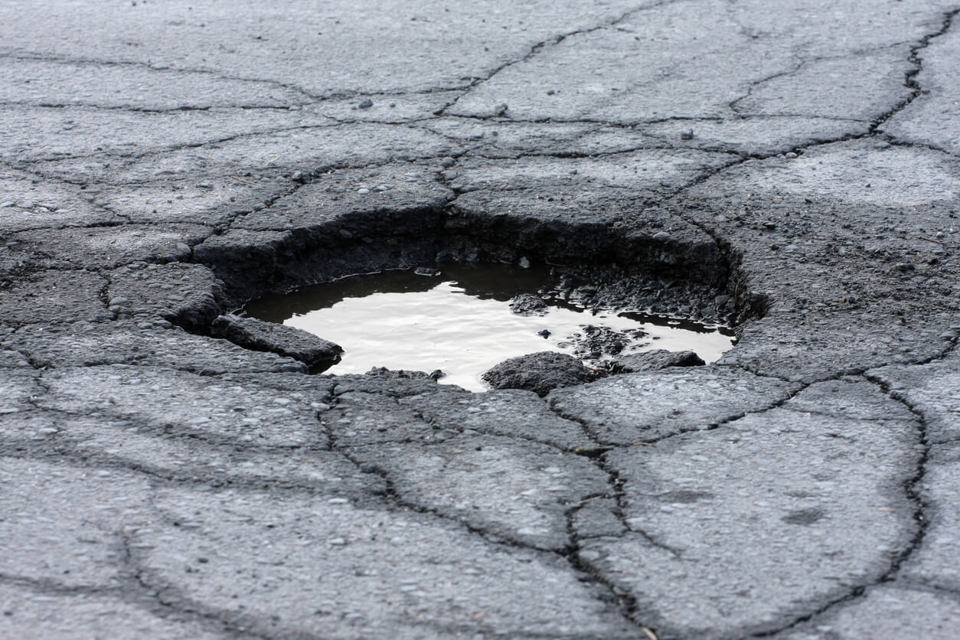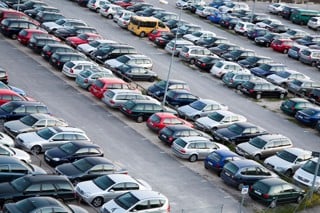The number of pothole-related breakdowns attended by RAC patrols from October to December 2016 gave rise to the first fourth quarter increase in this type of problem since 2013.
While the overall picture revealed by the RAC Pothole Index is surprisingly one of improvement, the RAC fears this fourth quarter increase in the proportion of vehicle breakdowns where poor road surface quality was likely to be a contributory factor should be seen as a warning sign that the underlying condition of the UK’s roads is still very poor.
From October to December 2016 the RAC saw a 24% increase in the number of potential pothole-related call-outs – such as damaged shock absorbers, broken suspension springs and distorted wheels (3,962 in Q4 2015 to 4,903 in Q4 2016) – attended by its patrols compared to the same period the previous year. The true damage effect of potholes on vehicles is, however, likely to be greater as the analysis does not include punctures which, of course, could be caused by potholes as well as many other common causes.
The analysis, published to coincide with National Pothole Day on 16 January, looks at the number and the percentage share of the RAC’s pothole-related breakdowns in comparison to all other types of call-out, and compares these with historic trends in rainfall and frost data to give a comprehensive understanding of the state of the country’s roads.
RAC chief engineer David Bizley said: “This is a particularly worrying finding because of course much of the country has not experienced harsh winter conditions for three years and rainfall in the fourth quarter of 2016 was the lowest in that period for more than a decade. Rain can be the catalyst for the formation of potholes, particularly in the winter when frosts are also common but despite the low rainfall the number of pothole faults attended by RAC in Q4 2016 is still higher than in the same period in the two previous years.
“If the first three months of 2017 prove to be both wet and cold, potholes are likely to appear at an unprecedented rate which would inevitably stretch local authority repair resources to their limit. While urgent remedial repairs will be needed to reduce the risk of further vehicle damage or injury to road users, including vulnerable motorcyclists and cyclists, it is insufficient investment in preventative maintenance, such as resurfacing, which is ultimately to blame.”
Research for the RAC’s latest Report on Motoring found that the state and maintenance of local roads was the number-one concern identified by the 1,755 motorists surveyed, with 14% listing it as their top concern.
In addition, the report also found that half of motorists (51%) believe the state of the roads in their area worsened over the past 12 months, with the preponderance of potholes by far the main culprit. This compared to just 9% who said their local roads had in fact improved.
Bizley added: “This is not really surprising given that the last analysis published by the Department for Transport’s suggested that there was a backlog of up to £8.6 billion in local road maintenance in England, and analysis from the Asphalt Industry Alliance’s Local Authority Road Maintenance Report suggesting the one-time catch-up cost may be even greater at £11.1bn.
The RAC has worked with Street Repairs – which runs National Pothole Day – to create the RAC Report Pothole app. This makes the process of taking action to fix road defects straightforward and effective. The app, which uses the GPS functionality of mobile phones to locate the pothole, delivers reports direct to the roads team of the responsible local authority, or strategic highway authority in the case of strategic roads and motorways.
Photographs can also be uploaded with reports. Reporting a pothole which is then left unrepaired by the responsible roads authority should aid subsequent claim for compensation lodged by a motorist who has suffered damage to their vehicles as a result of driving over it.



















Login to comment
Comments
No comments have been made yet.